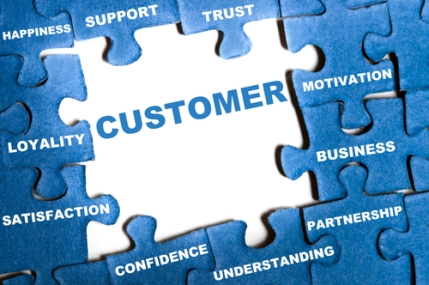I don’t know why, but the viral Vine video of the Apple store customer freaking out has me transfixed.
With all the reality shows in which people openly share every emotion they feel at every possible opportunity, you’d think I’d be used to it. By I figure the folks on TV are being paid to vent their frustrations; whereas this nicely dressed lady banging in frustration on her child’s stroller while yelling about how she was told by Apple Care they would help her if she came into the store is a real-life example of someone blowing their top – and in front of her own child and a store full of onlookers, no less. Yikes!
As TechZone360 contributing writer Nicole Spector wrote in a very witty posting earlier today, it’s tough to be too sympathetic for this out-of-control individual, but that we can all relate to companies making a promise and then not delivering on it.

Image via Shutterstock
Companies are beginning to invest a lot of time and effort in figuring out what customers want and need, and delivering solutions and support to meet those requirements and even exceed expectations. But sometimes the solution to a customer support problem is as plain as the nose on your face. And that solution is to speak two simple words: I’m sorry.
This advice comes courtesy of Scott Broetzmann, founder of Customer Care Measurement and Consulting, which with Arizona State University conducts and publishes studies on customer rage.
This year marks the sixth study of this sort. The one for 2013 will be unveiled in November at ASU’s Center for Services Leadership Symposium.
So what have Broetzmann and his colleagues learned about customer rage so far? One key takeaway, he says, is that oftentimes the things that people want don’t cost anything. Rather, what many customers who report a less than delightful experience are seeking is what Broetzmann refers to as psychological currency. And that, basically, is an apology.
For those concerned about the legal ramifications of offering an apology, Broetzmann says: “You can apologize without admitting blame.”
While many companies indicate they invest richly in addressing customer complaints, Broetzmann says about half of the people who complain get nothing at all for their troubles – no apology, no financial reimbursement, and no other fix. To test those results, Broetzmann and company a few years back did a study called The Art of the Apology, for which they called 100 businesses and asked for their nearest retail location. The next day they called back and said the location provided was wrong, and they recorded information on how those businesses responded. Only a third of the companies apologized after the third customer interaction of complaint.
The larger survey efforts involve interacting with 1,000 people who have had a problem with a product or service in the last 12 months. The core set of questions in the surveys is much the same every time, but that there is always a subset of questions that are newly created for each survey. This time around the new questions focus on consumer education in an effort to understand the degree to which consumers in an ever competitive and complex marketplace are leveraging the tools (like warranties) companies provide to educate customers and prospects on their products and services. This is important, notes Broetzmann, given there’s a strong relationship between consumer education and customer problems. Consumers live in an environment of constant threats (as an example, he mentions identity theft), Broetzmann says, so it would be interesting to find out if more vigilant individuals are less likely to experience rage. The jury is still out on that one, he says.
What we do know is that customer rage, he says, was at 68 percent between 2003 and 2001, dropped to 60 percent in 2011, but is still well above 50 percent.
“Companies today are all overreacting to the social media thing, to monitor social media and proactively respond to it, and to manage impressions,” Broetzmann says. “Wouldn’t it be better to actually fix problems and design better products than to manage fallout?”
Organizations also “need to be more concerned about managing the emotional side of these transactions, which they’re often ill equipped to do” because they are focused on transactional processes, he adds. Using scripts makes sense, he continues, but at some point you need to teach people how to go off script and use their personalities to solve customer problems.
Edited by
Rich Steeves